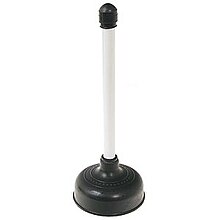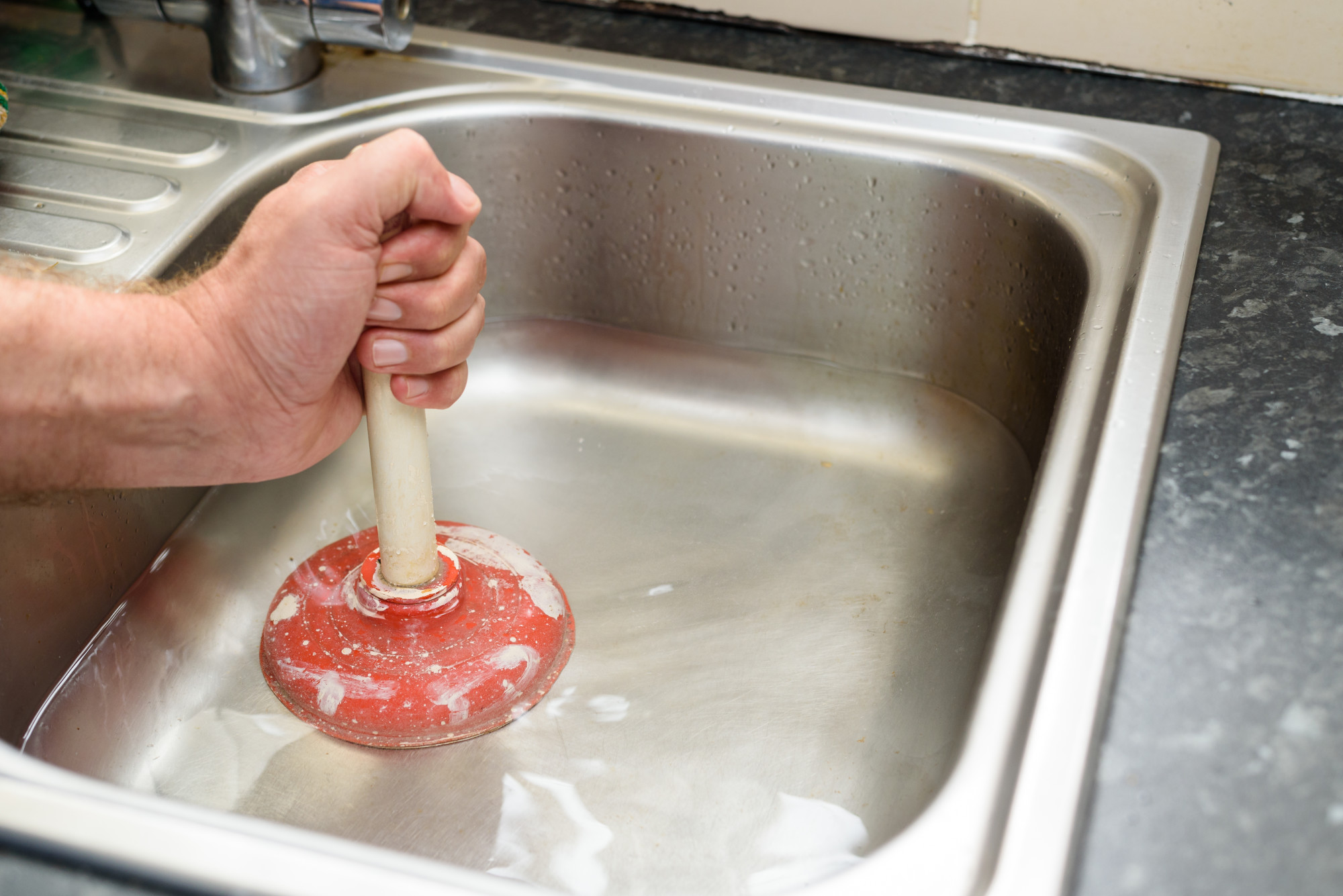How to Effectively Utilize Plungers and Drain Cleaners: Specialist Advice
How to Effectively Utilize Plungers and Drain Cleaners: Specialist Advice
Blog Article
We've uncovered this article pertaining to How To Use Your Toilet Plunger Correctly in 5 Easy Steps down the page on the net and concluded it made perfect sense to talk about it with you in this article.

Introduction
Proper upkeep of household drains pipes is crucial for preventing clogs and making sure smooth water flow. Among the key tools in every homeowner's toolkit is the bettor, together with numerous drain cleaners made to tackle persistent obstructions properly. This article discovers how to make use of plungers and drainpipe cleaners effectively to keep your drains moving freely.
Area 1: Comprehending Bettors
Types of Plungers
There are numerous sorts of plungers available, each designed for different types of drains and clogs. The most common types consist of cup plungers, flange plungers, and accordion plungers.
Exactly How Plungers Work
Bettors service the principle of developing stress and suction to remove clogs. When correctly applied over a drain, they develop a vacuum cleaner that can pull out debris or separate obstructions.
Choosing the Right Plunger
Picking the best plunger depends upon the kind of drainpipe and the nature of the clog. Mug plungers are optimal for sinks and bathtubs, while flange plungers are much better matched for toilets because of their style.
Typical Mistakes with Plungers
Avoiding these blunders makes certain efficient plunging: improper seal around the drainpipe, not enough pressure, and not clearing bordering particles.
Area 2: Utilizing Plungers Efficiently
Prep work
Before plunging, make sure the bettor covers the drainpipe completely and forms a limited seal. Clear any type of visible debris around the drainpipe opening.
Strategy
Beginning with mild plunging activities to build suction. Rise stress slowly, making use of a constant rhythm. Repeat as needed till the drainpipe removes.
Repairing Tips
If diving doesn't work, try changing the seal, using oil jelly for a better seal, or making use of a different kind of plunger.
Section 3: Recognizing Drainpipe Cleaners
Kinds Of Drainpipe Cleansers
Drain cleaners can be chemical or enzymatic. Chemical cleansers make use of solid chemicals to dissolve blockages, while chemical cleansers use natural enzymes to break down organic matter.
How Drainpipe Cleansers Work
Chemical cleansers respond with obstructions to liquify them, while chemical cleaners break down organic materials like hair and grease without harming pipes.
Security Considerations
Constantly put on handwear covers and eye protection when utilizing chemical drainpipe cleaners. Make sure sufficient ventilation and adhere to maker guidelines carefully.
Eco-Friendly Alternatives
Consider making use of vinegar and baking soda or enzyme-based cleansers for green choices that are more secure for pipes and the environment.
Section 4: Making Use Of Drain Cleaners Efficiently
Application Techniques
Pour chemical cleansers straight into the drainpipe opening. Permit them to help the advised time before flushing with hot water. Chemical cleansers ought to sit overnight.
Safety measures
Stay clear of blending different sorts of cleaners, as this can generate harmful fumes. Never use chemical cleaners along with a plunger, as splashing can happen.
Taking Care Of Persistent Clogs
For relentless blockages, think about making use of a plumbing serpent or calling a professional plumber to avoid damage to pipes.
Final thought
Finally, comprehending how to use bettors and drain cleaners efficiently is vital for preserving healthy and balanced pipes systems. By picking the right tools and methods, home owners can take on small blockages and avoid significant pipes problems down the line.
How To Properly Use A Plumbing Snake To Clear Drains
When any drain clogs in our home arise, we tend to gravitate toward the plunger and little else. In cases where the plunger and its vacuum-created pressure are not able to clear clogs, many immediately move to harmful chemicals or simply call their plumber to fix the issue.
we’re happy to help with all drain cleaning needs and concerns. This includes informing you on a few other home remedies you may have at your disposal for minor to moderate clogs, one of which is the use of a plumbing snake. Many people have never used one of these before – let’s go over the steps to take when your drain clogs and you have a plumbing snake available.
Attempt Plunger Use
The first step here, as we noted above, should indeed be to grab your plunger when you notice a drain clog and attempt to resolve it this way. If you’re unsure how to use a particular type of plunger, our plumbers can answer any questions you have. If this doesn’t do the trick, however, you move on to the snake.
Locate And Prepare Snake
A plumbing snake is a metal or plastic device that’s generally about a quarter of an inch thick. It’s design with significant extensions, meant to reach down into your clogged drain and push the clog out. Snakes also contain drain augers that will latch onto and push stubborn blockages.
If your plunger doesn’t clear a clog, locate your snake and bring it to the drain in question. We also recommend keeping a bucket nearby to collect the clog once you pull it out, plus we’d advise wearing goggles and possibly protective gloves.
Feed Snake
Once you’re ready to go, feed the snake slowly down the drain, using the crank device it comes with to keep it moving until it finds the clog. Once this happens, much of the clog will be latched onto the coil so you can pull it out, while the rest will simply break up and flow downward.
Detach Debris
Remove the snake slowly from the drain, and once you’ve done so, pick off any debris that’s stuck to the coil. This is another area where wearing gloves is a must.
Flush Drain
Finally, take a few minutes to ensure the snake has done its job correctly. If you’ve been using it on a toilet, flush the toilet a couple times and make sure everything flows well. If you’ve used it on a different drain, flush it with some room temperature water.
https://www.mybuddytheplumber.com/blog/how-to-properly-use-a-plumbing-snake-to-clear-drains/

Application Techniques
Pour chemical cleansers straight into the drainpipe opening. Permit them to help the advised time before flushing with hot water. Chemical cleansers ought to sit overnight.
Safety measures
Stay clear of blending different sorts of cleaners, as this can generate harmful fumes. Never use chemical cleaners along with a plunger, as splashing can happen.
Taking Care Of Persistent Clogs
For relentless blockages, think about making use of a plumbing serpent or calling a professional plumber to avoid damage to pipes.
Final thought
Finally, comprehending how to use bettors and drain cleaners efficiently is vital for preserving healthy and balanced pipes systems. By picking the right tools and methods, home owners can take on small blockages and avoid significant pipes problems down the line.
How To Properly Use A Plumbing Snake To Clear Drains
When any drain clogs in our home arise, we tend to gravitate toward the plunger and little else. In cases where the plunger and its vacuum-created pressure are not able to clear clogs, many immediately move to harmful chemicals or simply call their plumber to fix the issue.
we’re happy to help with all drain cleaning needs and concerns. This includes informing you on a few other home remedies you may have at your disposal for minor to moderate clogs, one of which is the use of a plumbing snake. Many people have never used one of these before – let’s go over the steps to take when your drain clogs and you have a plumbing snake available.
Attempt Plunger Use
The first step here, as we noted above, should indeed be to grab your plunger when you notice a drain clog and attempt to resolve it this way. If you’re unsure how to use a particular type of plunger, our plumbers can answer any questions you have. If this doesn’t do the trick, however, you move on to the snake.
Locate And Prepare Snake
A plumbing snake is a metal or plastic device that’s generally about a quarter of an inch thick. It’s design with significant extensions, meant to reach down into your clogged drain and push the clog out. Snakes also contain drain augers that will latch onto and push stubborn blockages.
If your plunger doesn’t clear a clog, locate your snake and bring it to the drain in question. We also recommend keeping a bucket nearby to collect the clog once you pull it out, plus we’d advise wearing goggles and possibly protective gloves.
Feed Snake
Once you’re ready to go, feed the snake slowly down the drain, using the crank device it comes with to keep it moving until it finds the clog. Once this happens, much of the clog will be latched onto the coil so you can pull it out, while the rest will simply break up and flow downward.
Detach Debris
Remove the snake slowly from the drain, and once you’ve done so, pick off any debris that’s stuck to the coil. This is another area where wearing gloves is a must.
Flush Drain
Finally, take a few minutes to ensure the snake has done its job correctly. If you’ve been using it on a toilet, flush the toilet a couple times and make sure everything flows well. If you’ve used it on a different drain, flush it with some room temperature water.
https://www.mybuddytheplumber.com/blog/how-to-properly-use-a-plumbing-snake-to-clear-drains/

Do you enjoy more info about Tips on How to Effectively Use a Plunger? Write a remark directly below. We'd be glad to know your ideas about this entry. We are looking forward that you visit us again in the future. If you enjoyed reading our article please don't forget to share it. Bless you for being here. Don't hesitate to check our blog back soon.
Call Today Report this page